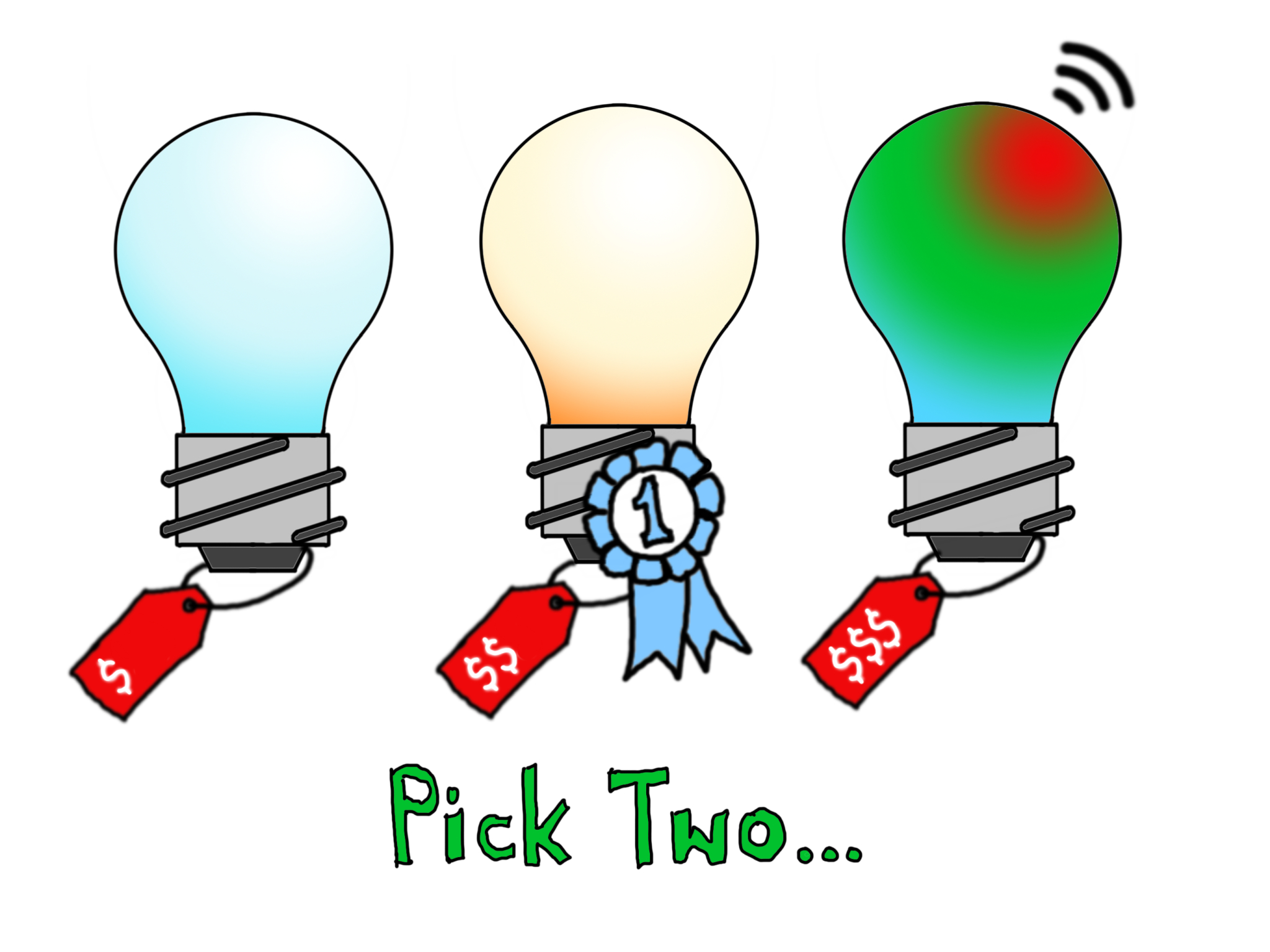A few years ago I spent a rather silly amount of time buying and testing light bulbs from local retailers in the hopes of finding something I liked. I failed.
I tried again in 2020 and found a few I liked and our team built a buying guide around them. Now that buying guide is obsolete, and this week’s GEAR TALK post is about why it is harder than ever to buy a good bulb and why Matter, a new smart home standard, is a bright spot in an otherwise disappointing market.
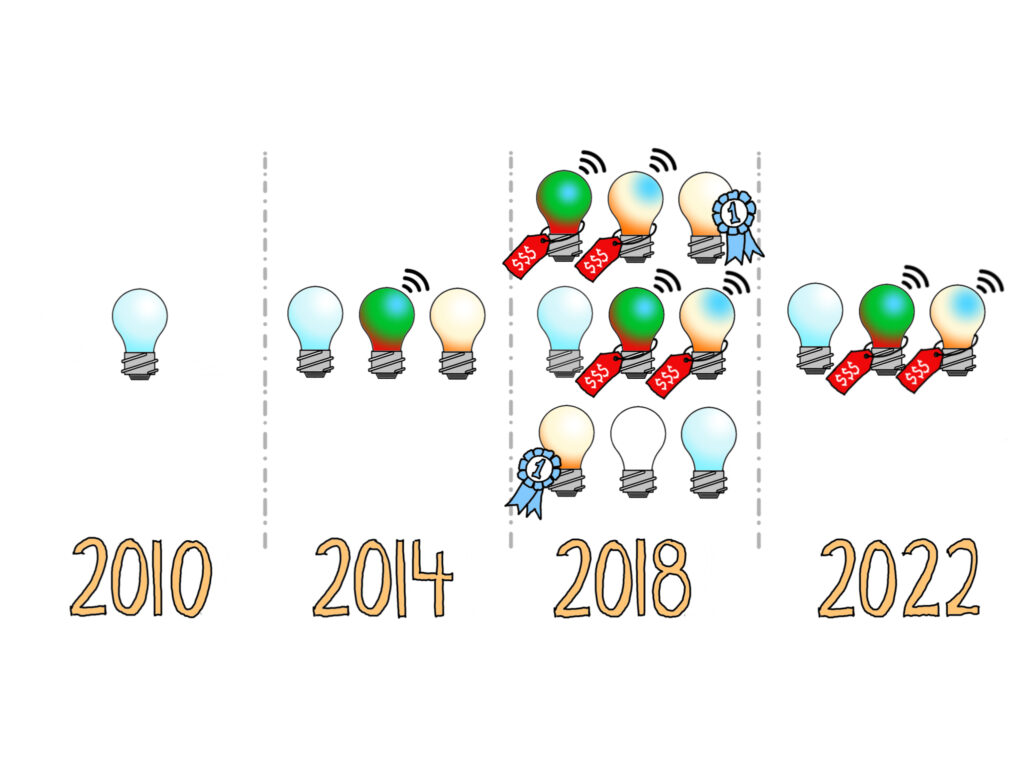
I think it just got a lot harder to buy a good light bulb, and that is a most unwelcome surprise to someone who really cares (okay, really REALLY cares) about lighting. Sure, I can specify awesome products with integrated LEDs that are better than ever, but when it comes to putting a bulb in the lamp by the couch, I choose from the same products as everyone else. And my choice is becoming increasingly limited.
When LED bulbs first hit the marketplace, they were expensive and, most often, very poor in color quality or rendering. This didn’t last long as manufacturers quickly developed new products as LED technology advanced. In 2014, when I built out a studio for working at home, I had a number of smart bulbs and LEDs to choose from. I still could buy a cruddy bulb, but I could also buy better bulbs and bulbs that changed color with the swipe of my phone.
Around 2018 I threw my hands up in disgust when trying to buy a 60-watt replacement LED bulb. I had eight choices in just one store, and most of them were bad. Smart bulbs were hitting the market from more and more manufacturers, innovation was lightning fast, and it seemed like the products available changed from week to week.
This rapid innovation led to some great products, like the TCP Good Life series of bulbs featured in our 2020 guide. Sadly, this was not to last.
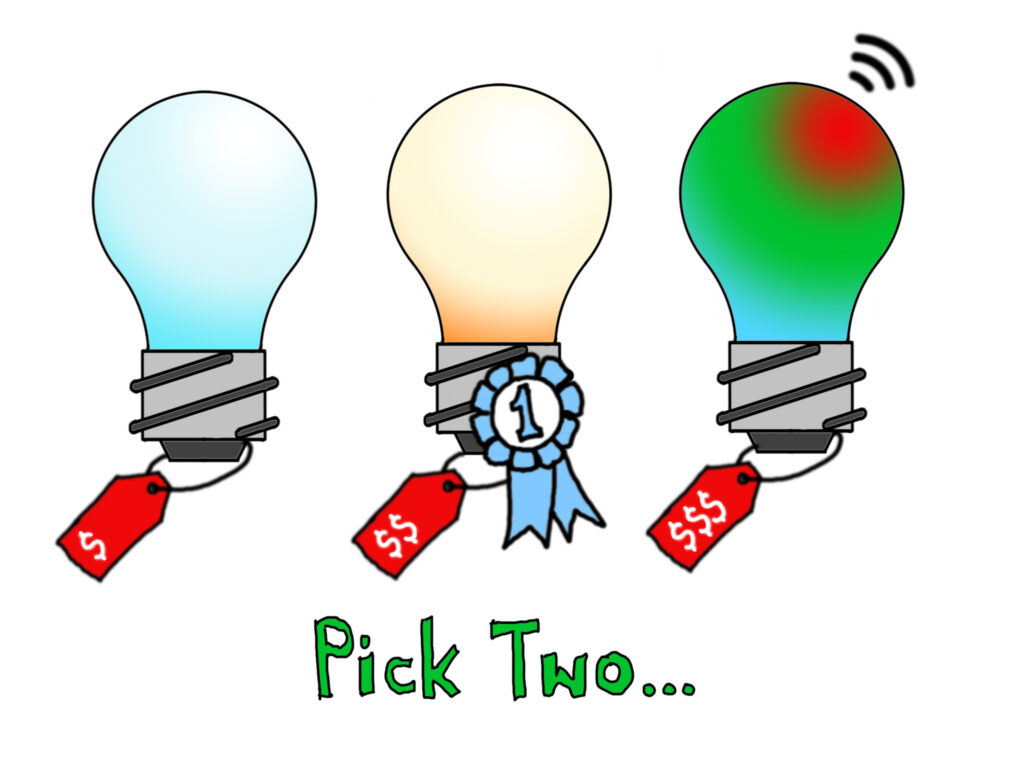
Back to my first illustration. Imagine you are a manufacturer of bulbs in the last few years. Sales are dropping off rapidly as we reach what lighting geeks like me call “socket saturation.” If you bought an LED bulb in 2019, chances are good that it is still working…and therefore you are not at the store buying another. When this happens in millions of homes, literally millions of people stop buying bulbs.
This creates a huge problem if you manufacture or sell bulbs. You simply cannot offer the same range of products and be profitable, so you have to narrow down your lineup. Let’s say, for sake of argument, that you have three options:
Bulb A is inexpensive to manufacturer and inexpensive to buy. It is basic and simple, a staple product.
Bulb B costs twice as much to manufacture, but you would be hard pressed to sell it for twice as much. Perhaps it features warm-dimming technology to mimic incandescent or sunset, but most buyers don’t understand the benefits.
Bulb C costs three times as much to manufacture, but you can sell it for four times as much because it is “smart.” It does fancy things like change color and talk to your smart phone.
Which did people buy? I don’t have access to sales numbers, but by the product available today I’m guessing that people bought the cheap simple bulb and the smart bulb. Sadly, that means my favorite bulbs have gone away, fading from the marketplace as quickly as they arrived.
So I seem to be left with a choice: a cheap cruddy LED bulb or a smart bulb. And since I hate cruddy light, smart bulbs may be the future.
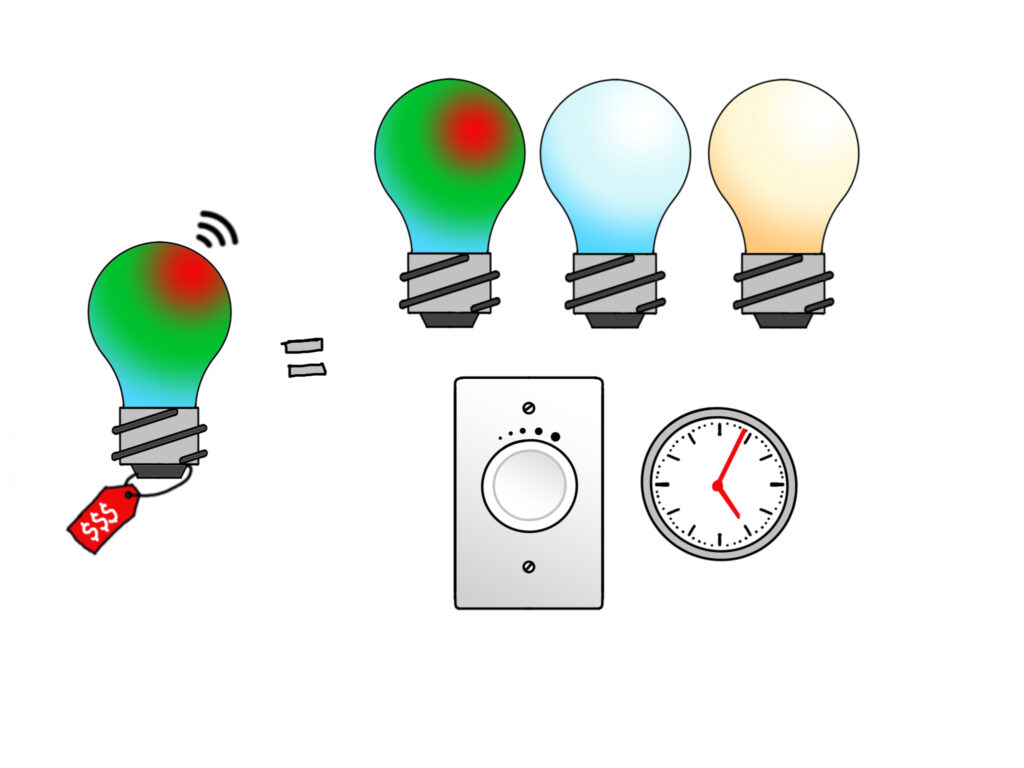
Smart bulbs can be pretty cool devices. Built-in technology allows them to be lots of different things – a crisp white bulb for doing homework, a soft amber for relaxing, a deep blue for movie watching, and more. The same technology can replace dimmers and add timer-esque functions, like turning on the lights just right at sunset. I like the concept of smarter lighting – and smart bulbs are one way to get there. But it hasn’t been all roses….
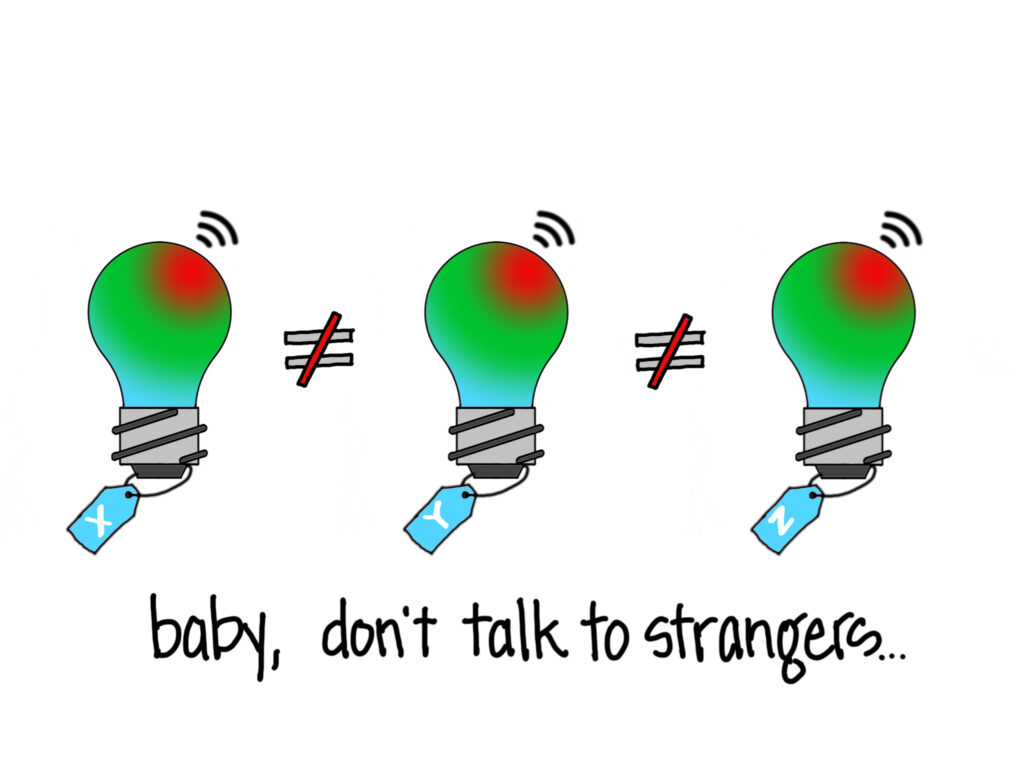
A big problem troubling smart home devices like smart bulbs is interoperability. These devices can be complex electronic devices, with downsides I discussed long ago when living with my first round of them in my studio. Rapid development and marketplace competition meant that it was easy to buy smart products from a number of manufacturers and crazy hard to get them to play nicely with each other. I finally gave up and gutted some of my smart lighting for a simpler solution years ago, not because the bulbs were not good light but because I simply couldn’t control them all easily. Brand X bulbs didn’t talk to bulbs from Brand Y. Controllers from Brand Y wouldn’t talk to Brand Z. There were some translators, of course, but no translator ever talked to all the options – just a few the manufacturer was able to sign up as partners.
That may be about to change for the better, and it might be the future of light bulbs.
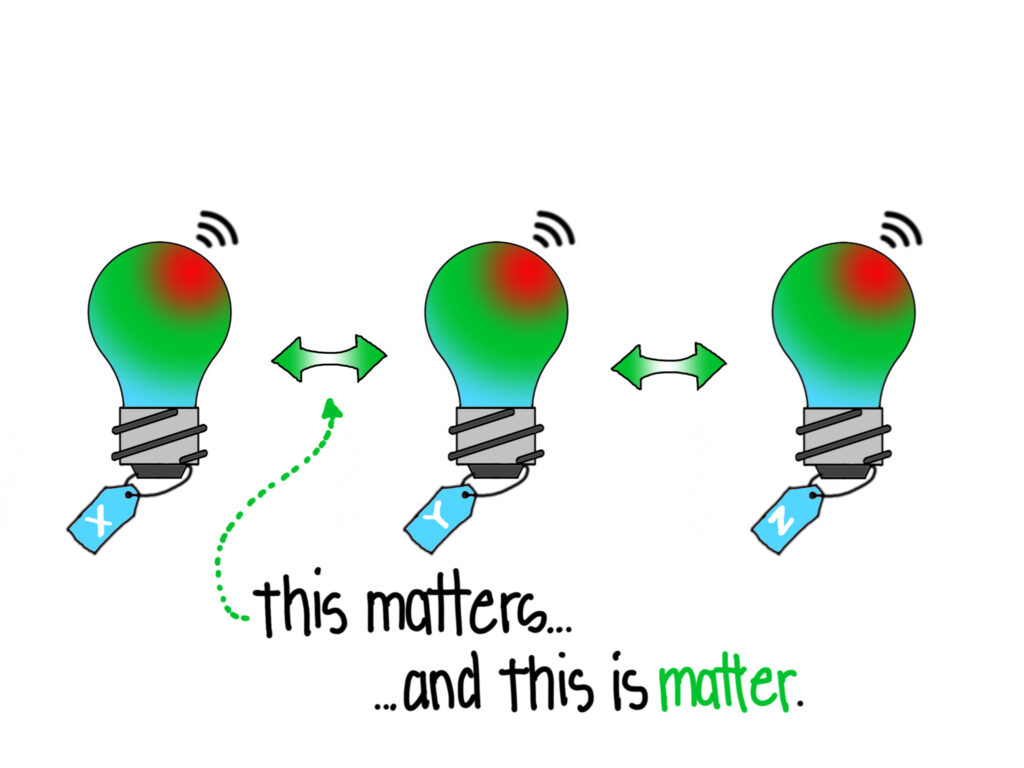
Just a few weeks ago, MATTER became officially available for manufacturers to address just this issue. Matter is a new industry standard that can simplify communication between devices from different manufacturers, speed up setup, and increase security of the connected devices. You may have heard of some of the industry players that are planning to release Matter-enabled devices. There are brands that lighting geeks know like Lutron and Legrand and Signify, but also brands that consumers will recognize including some of the biggest, like Apple and Google.
This could be big. Perhaps in a few short years I’ll be able to put together a new light bulb buying guide that offers great lighting and simple setup.
For now, it’s a bit rough out there.
